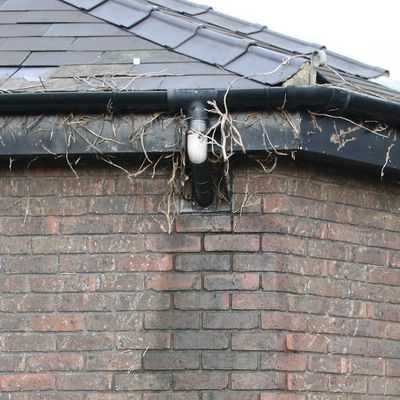Penetrating Damp
What is Penetrating Damp?
Penetrating damp is the process of moisture moving from the exterior wall of a building to the interior. It occurs when outside moisture like wind-driven rain impacts a building’s wall. Building materials like brick are porous. They soak up rain to saturate the wall with penetrating damp.
Rain penetration into masonry can occur in buildings of all ages. At its most obvious, it penetrates the wall and displays as a damp patch on the internal wall. This causes discolouration, paint and wallpaper peeling and flaking.
Even if it does not penetrate entirely through a wall, rainwater penetration can be damaging to a property. Wind-driven rain in masonry can cause moss growth, increased heat loss and frost damage.
Water soaks through the exterior wall, where it travels through to the interior walls. There, moisture manifests as wet spots on the wall. These patches of penetrating damp damage wallpaper, plaster and the walls themselves.
The resulting damp environment causes spores in the air to settle. Mould and mildew begin to grow.
Brick and masonry substrates are especially susceptible to penetrating damp. This is due to their interior structure which gives them sponge-like properties of moisture absorption.
Rain penetration is not a problem that is restricted to single-skin walls.

The threats of Penetrating Damp.
The threats of living in a house with a penetrating damp problem, Apart from structural collapse, penetrating damp has the following consequences:
Health:
Mold, mildew, and other microorganisms that live in damp and wet conditions can be risky to the occupants of the home. Damp symptoms can cause allergies at the very least, and bacterial infections at the worst.
Regulation:
If penetrating damp is not solved, the property owners will be subject to disciplinary action. Many local council and government building regulations require routine inspections and checks to ensure that structures are safe and secure places to live and work. Noncompliance could result in a hefty fine as well as other legal issues.
Depreciation:
Increasing dampness will drastically lower the home’s value, causing large losses to the seller.


Heading
In many cases, rain penetration is caused by poorly designed or maintained building details (e.g. blocked downpipes or leaking gutters) causing large amounts of rainwater to flow over a small section of masonry. In these cases, the penetrating damp can usually be cured by rectifying the defect.
Roof damage can let in moisture, causing damp to take hold. Common things to look for on roofs include damaged flashing and pointing, as well as cracked or missing tiles.
The drainage system is also a point of common failure. If exterior drains become clogged, rainwater can collect against the brickwork – leading to hot spots of penetrating damp.
Broken drains can also cause water to fall or collect in irregular areas and cause dampness and mould growth.
Door frames are also common points of ingress for moisture. General damage, cracks and a lack of weather protection devices are the points of failure to watch out for to avoid damp getting in through closed doors.
In other cases, rain penetration can be caused by the masonry wall not being weathertight enough to withstand local weather conditions. Often the weathertightness of the masonry can be improved using external render, cladding, or weatherproof paints. However, these solutions all change the visual appearance of the masonry.


